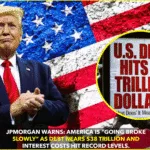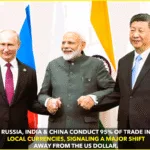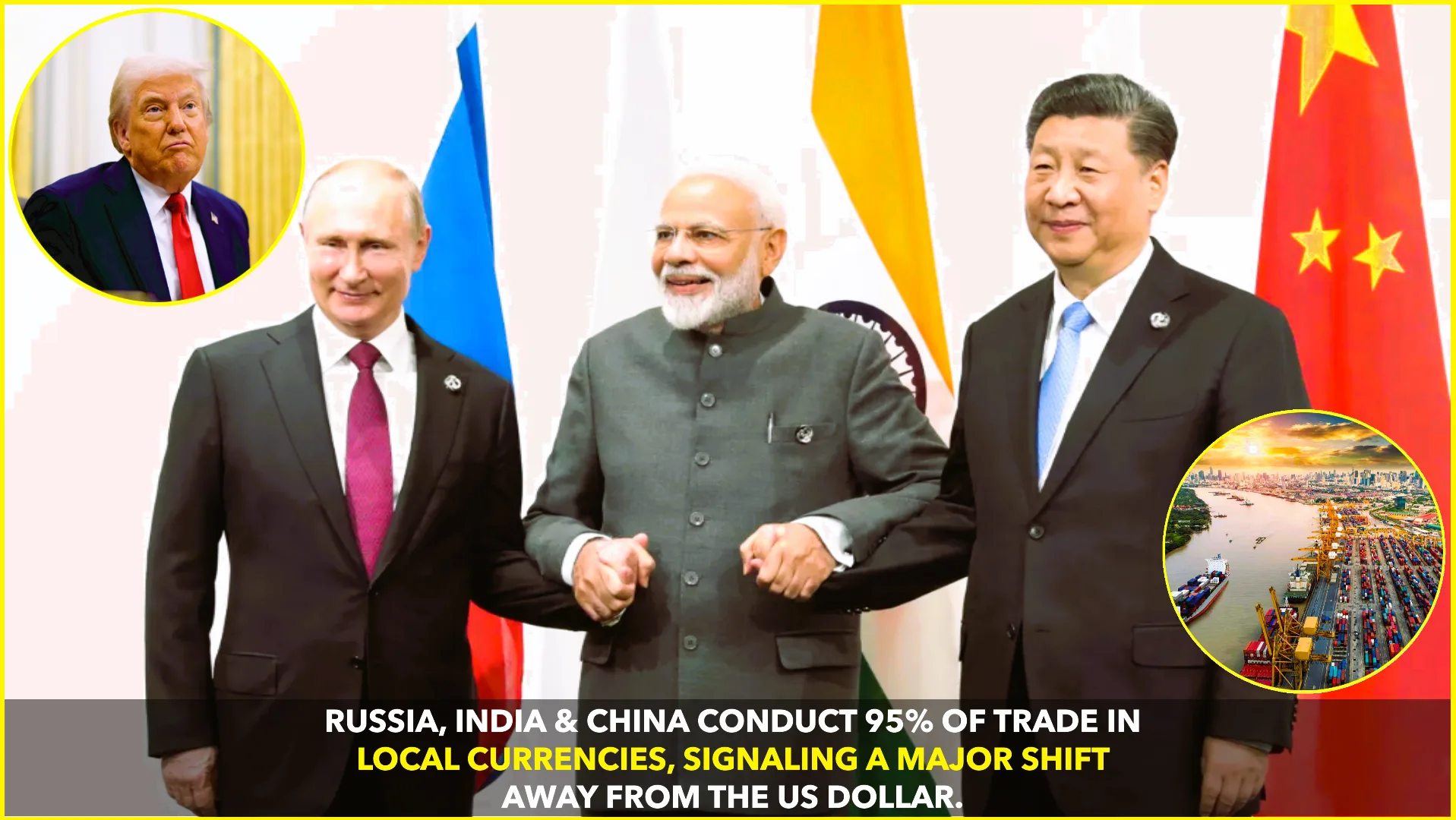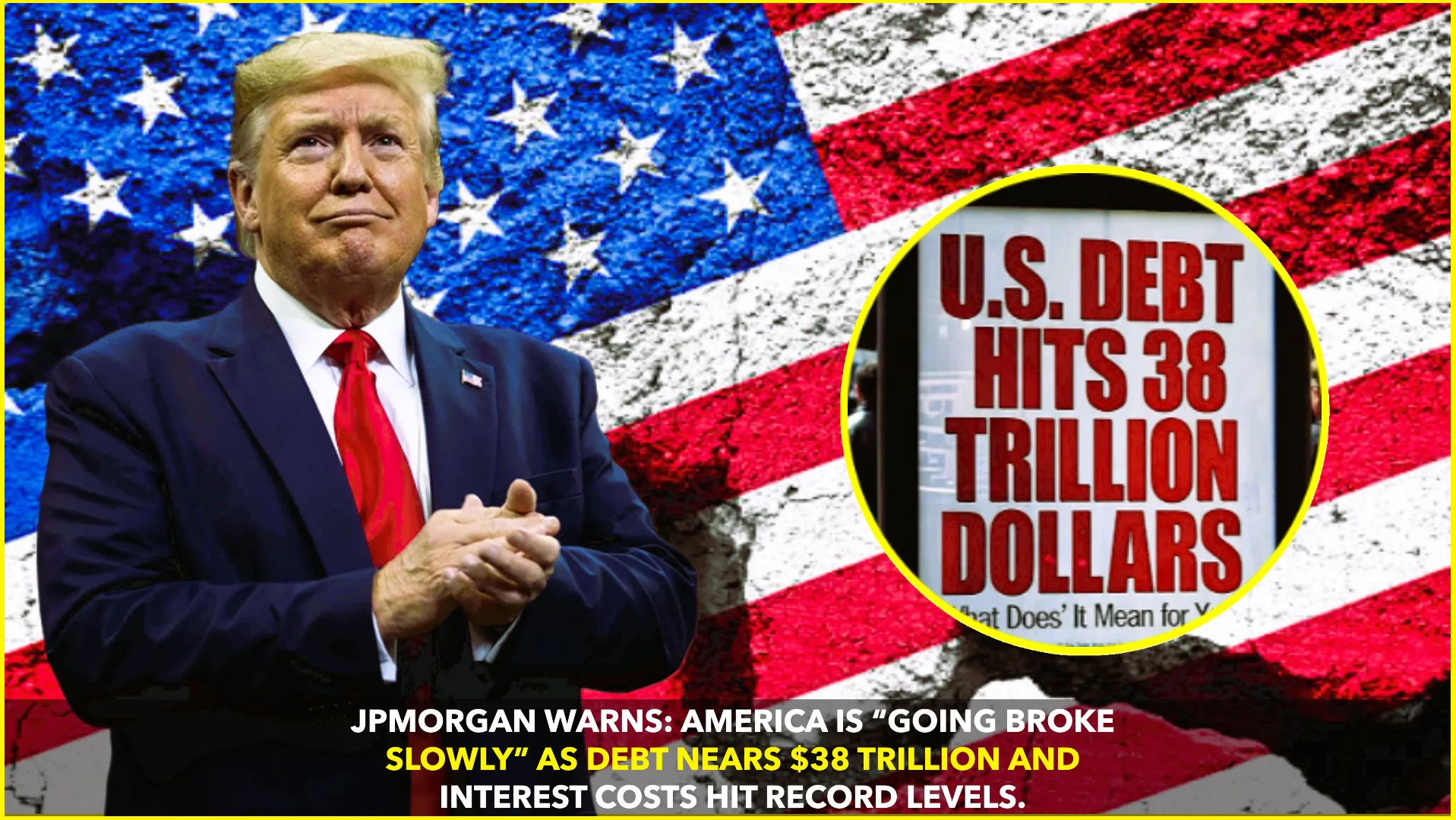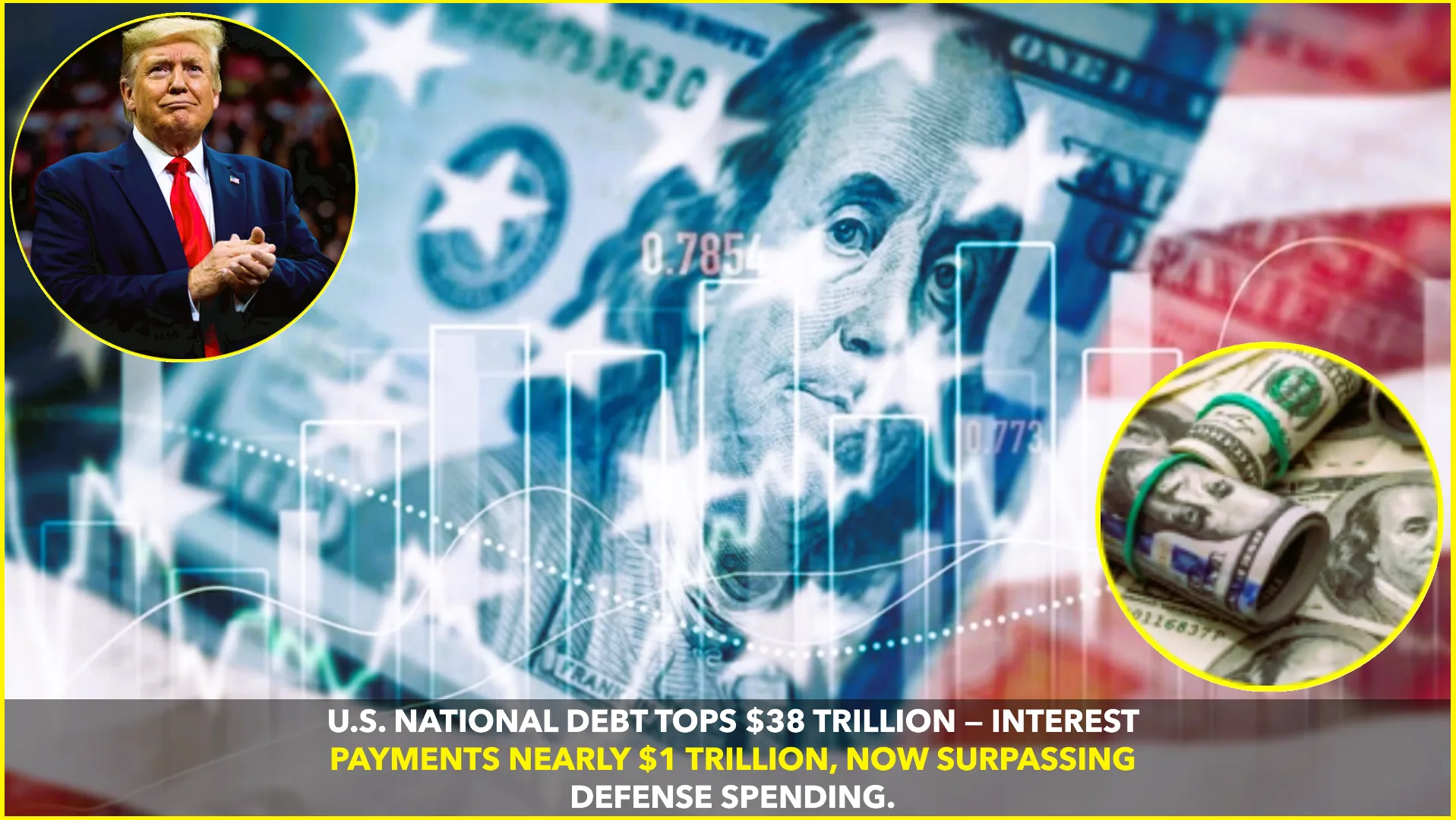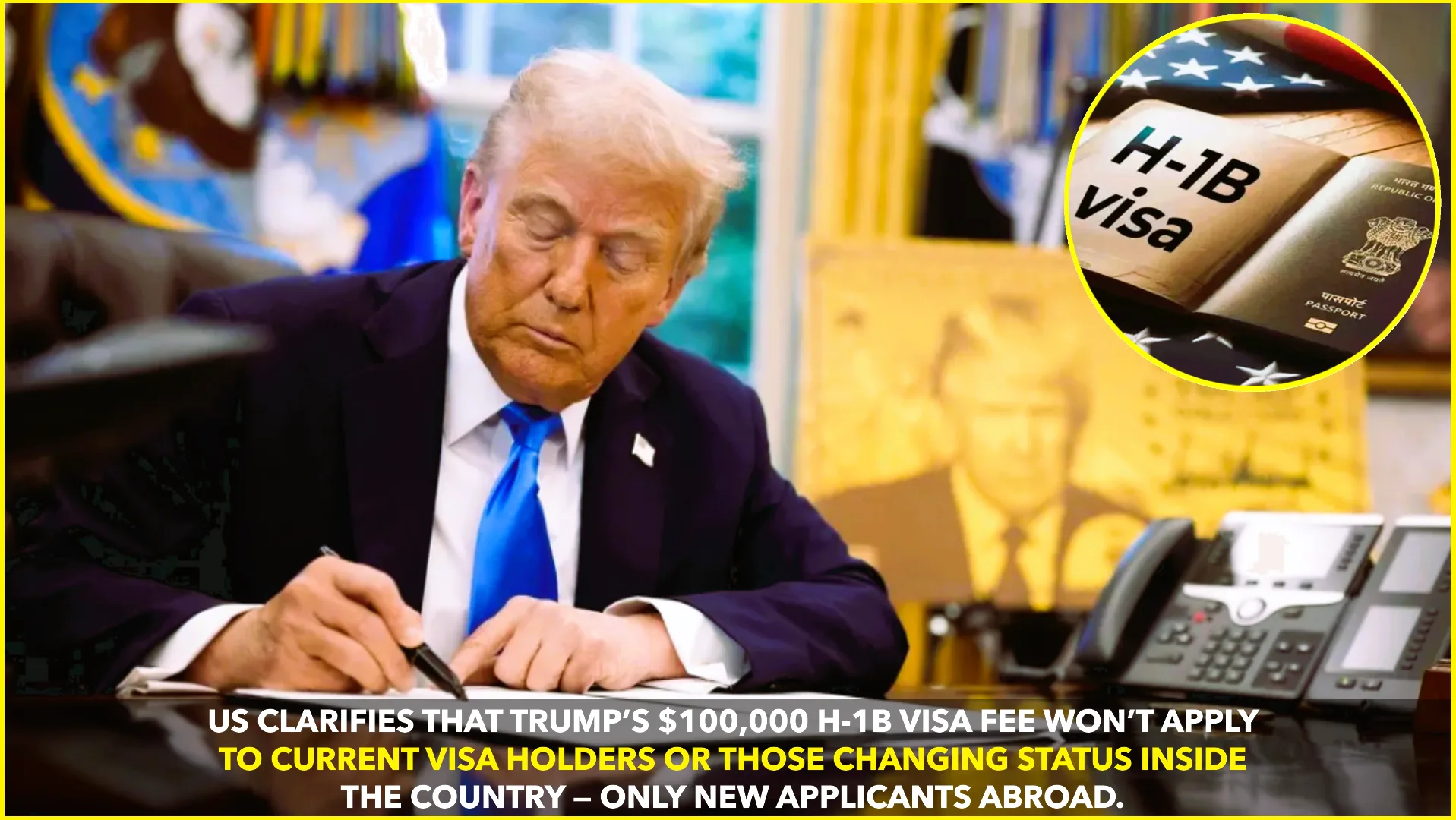According to TASS, around 90–95% of Russia’s trade with India and China is now settled using domestic currencies—the ruble, yuan, and rupee—instead of the US dollar. This marks a historic transformation in international trade and finance, as global powers increasingly move away from dollar-based settlements.
A Historic Shift in Global Trade
For decades, the US dollar has been the backbone of international trade, dominating global reserves and cross-border payments. But now, a growing number of nations are beginning to conduct business in their own currencies.
Russia’s Deputy Prime Minister Alexander Novak said in an interview with the Solovyov Live TV channel that this change “happened naturally,” as Western sanctions pushed Moscow to seek alternatives. Novak noted that “with our friends from China and India, we have already switched to national currencies by 90–95%. This is automatic.”
(Source: TASS)
What’s Driving the De-Dollarization Wave
Several factors have contributed to this massive shift:
- Western Sanctions: After sanctions cut off many Russian banks from the SWIFT system, Moscow had to strengthen trade in non-dollar currencies.
- BRICS Cooperation: India, China, and Russia—key BRICS members—have been promoting local currency trade to reduce reliance on Western financial systems.
- Strategic Diversification: Trading in rubles, yuan, and rupees allows these nations to shield their economies from exchange rate shocks and geopolitical risks tied to the dollar.
This transition isn’t limited to Russia’s bilateral trade. It’s part of a broader BRICS strategy aimed at challenging Western financial dominance and promoting a more multipolar economic order.
Impact on the Global Financial System
Experts believe this growing use of local currencies could reshape global finance in several ways:
- Weaker Dollar Dominance: As more trade bypasses the dollar, its global influence could gradually decline, especially across Eurasia.
- Rise of Regional Currency Blocs: The ruble-yuan-rupee network represents a new financial ecosystem that strengthens regional cooperation.
- Reduced US Leverage: The US’s ability to use financial sanctions as a geopolitical tool could diminish over time.
- Boost for BRICS: With local currency settlements gaining traction, BRICS nations are laying the groundwork for a shared financial infrastructure.
According to a report by DailyHodl, financial analysts say Russia’s move highlights the success of the de-dollarization campaign within BRICS. As global south economies increasingly trade outside Western financial systems, the long-term balance of power could shift significantly.
(Source: DailyHodl)
India’s Role in the Shift
For India, this move opens new possibilities. Using the rupee in trade with Russia reduces transaction costs and supports its “Make in India” initiative by encouraging local value chains. India has already developed rupee-ruble settlement mechanisms and is exploring rupee-yuan exchanges to simplify bilateral trade.
China’s Expanding Yuan Influence
China’s yuan is already the world’s fifth most-used currency for global payments, according to SWIFT data. Its growing role in Russia-China trade strengthens the yuan’s claim as a regional reserve currency.
Beijing’s push for yuan-based oil and gas settlements further accelerates its long-term goal—turning the yuan into a global alternative to the dollar.
What Comes Next
While experts caution that the US dollar won’t lose its dominance overnight, the pace of change is remarkable. Just a few years ago, over 80% of Russia’s trade was conducted in dollars and euros. Today, that figure has flipped almost entirely.
If similar trends continue in other BRICS nations—such as Brazil and South Africa—the group could soon form a multi-currency economic bloc capable of reshaping international finance.
Conclusion
Russia’s 90–95% trade settlement with India and China in local currencies marks a turning point in global economics. What began as a response to sanctions is evolving into a strategic financial realignment across Eurasia.
This transformation is not only about bypassing the dollar—it’s about redefining global power through new economic alliances and regional self-reliance.
